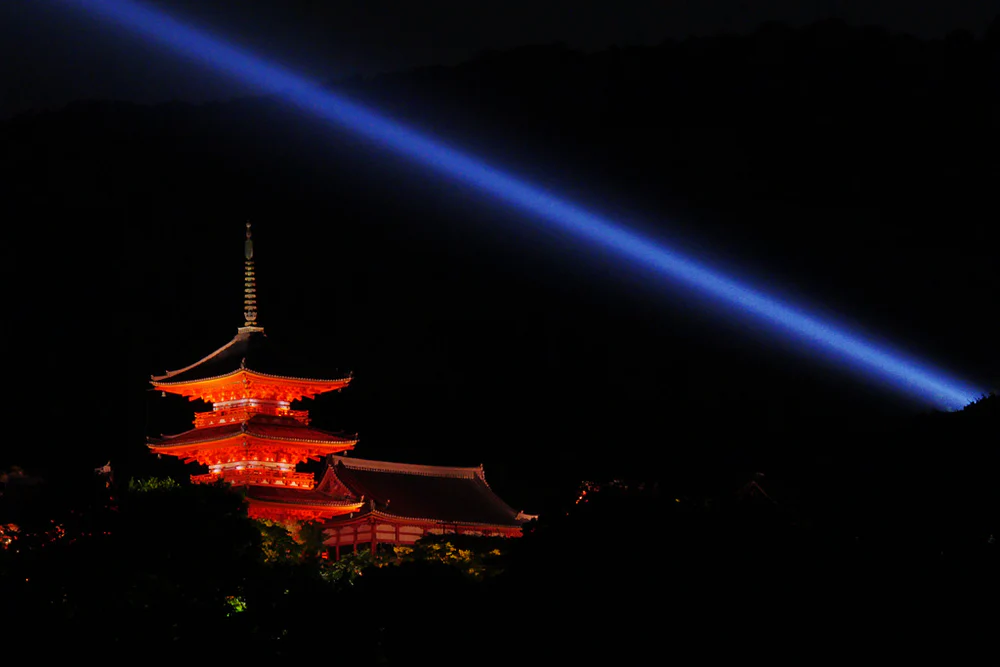
Introduction de bougies japonaises
Les bougies japonaises, également connues sous le nom de «bougies de cire», ont été un phare de tradition et de culture tout au long de l'histoire du Japon, illuminant non seulement les espaces physiques mais aussi les voies spirituelles et culturelles de la nation. Fabriqués à partir de matériaux à prédominance naturelle, ces bougies se distinguent en raison de leur esthétique unique et de leur savoir-faire complexe nécessaire pour les créer. Initialement réservé à une utilisation dans les temples bouddhistes et parmi l'aristocratie, leur lumière chaleureuse et scintillante a longtemps joué un rôle essentiel dans les rituels spirituels et la vie quotidienne. Ils sont profondément symboliques, représentant souvent la pureté, la nature éphémère de l'existence et la protection contre les forces malveillantes.
La création de ces bougies est une forme d'art enracinée profondément dans la tradition historique, raffinée sur des générations d'artisans qualifiés. Le matériau principal utilisé est la cire de brume, qui est extraite des fruits du brume, offrant aux bougies un parfum naturel et subtil. Cette cire est complétée par une mèche épaisse roulée à la main à base de papier washi, ce qui permet une flamme plus grande et plus lumineuse que les bougies typiques. Cette combinaison unique améliore non seulement la sortie lumineuse, mais garantit également que la flamme danse plus vivement, jetant des ombres dynamiques qui ajoutent à l'ambiance de tout paramètre. Les artisans qualifiés insufflent également aux bougies avec une variété de parfums naturels et les ornent de designs délicats et souvent peints à la main, transformant chaque bougie en une œuvre d'art autonome.
Caractéristique géographique
- Ville et préfecture : Kyoto, préfecture de Kyoto
- Population : Environ 1,46 million de personnes
- Produits spéciaux : Au-delà de Kiyomizu Ware, Kyoto est réputé pour son matcha exquis (thé vert en poudre), les agrumes Yuzu parfumés et une gamme d'artisanat traditionnel comme le thé Uji, la soie de kyoto et l'artisanat en bambou.
- Introduction : Kyoto, avec son passé à l'égard de la capitale ancienne du Japon, est une ville où l'histoire et la modernité convergent en harmonie. Célèbre pour ses temples à couper le souffle, ses maisons de thé traditionnelles et ses festivals culturels, Kyoto sert de musée vivant de la riche histoire du Japon, offrant aux visiteurs et aux résidents un profond sentiment de connexion avec l'héritage de la nation.

Histoire de la bougie japonaise
Origines dans la lueur impériale
La fabrication de bougies à Kyoto a ses origines profondément enracinées dans les pratiques spirituelles de la ville, commençant comme un métier de temple pendant la période Heian. Les dossiers historiques révèlent que les moines ont d'abord conçu des bougies comme un outil pratique pour mesurer le temps pendant leurs prières complexes et leurs rituels étendus. Cette méthode leur a permis de maintenir des intervalles précis pour chanter et méditer, intégrant l'art de la bougie en train de faire profondément dans le tissu spirituel et culturel de Kyoto.

L'évolution de la cire et de la mèche
Les artisans ont développé des méthodes spécialisées pour affiner la cire de brume plus approfondie, entraînant une brûlure plus propre et plus cohérente. De plus, la préparation de mèches a subi des améliorations qui ont permis aux bougies de brûler plus et plus longtemps que jamais. Ces mèches ont été soigneusement fabriquées à partir de papier washi de haute qualité, traitées et tordues d'une manière qui a augmenté le flux d'oxygène vers la flamme, produisant ainsi une lumière plus stable et plus lumineuse. Cette maîtrise technique distingue les bougies de Kyoto des autres variantes régionales, ce qui les rend très recherchés à travers le Japon.

Préservation de la pureté
Le dévouement des artisans à la préservation de ces méthodes a été motivé par un profond respect pour la signification culturelle et la valeur artistique de leur métier. Les bougies Kyoto, réputées pour leur flamme brillante et propre, ont continué à faire partie intégrante de divers contextes traditionnels comme les cérémonies de thé, les rituels religieux et les autels familiaux. Cette continuité a assuré que les bougies conservaient leur rôle non seulement en tant que sources de lumière, mais en tant que symboles culturels incarnant les valeurs esthétiques et spirituelles de Kyoto.

Caractéristiques de la bougie japonaise
1. Design illuminant
Les bougies japonaises sont réputées pour leurs conceptions exquises et souvent peintes à la main. Ces œuvres d'art sur la cire varient de simples motifs naturels aux paysages complexes, reflétant les saisons et la beauté naturelle du Japon, chaque bougie offrant un aperçu de la vision et des compétences de l'artisan.

2. Une symphonie de parfums
Les artisans insufflent souvent ces bougies avec des parfums subtils dérivés de fleurs locales et d'herbes comme Yuzu et Sakura. Cela améliore non seulement l'ambiance, mais reflète également la beauté saisonnière de Kyoto, permettant à chaque bougie de raconter une histoire à travers son parfum.

Applications modernes
Aujourd'hui, les bougies Kyoto sont vénérées à la fois au Japon et au-delà, non seulement pour leur utilisation pratique dans les cérémonies et la vie quotidienne, mais aussi comme objets de l'art. Ils sont de plus en plus populaires dans des environnements contemporains comme les spas et les hôtels de boutique, où leur lumière naturelle et leur parfum contribuent à une atmosphère paisible et authentique.

